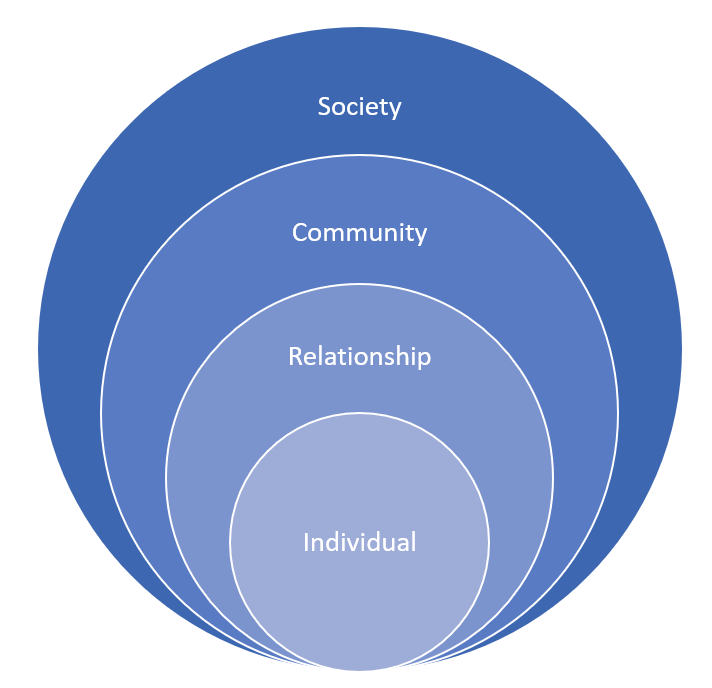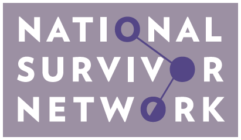February 22, 2022 | Category: Values Orientation
Our third value states: “The NSN promotes a public health framework and human rights-based approach to anti-human trafficking efforts. We uplift survivor-centered, public health prevention strategies that honor human rights and avoid increased criminalization, and work to build up and increase non-carceral strategies and solutions.”
What is a public health framework?
“The focus of public health is on the health, safety, and well-being of entire populations. A unique aspect of the approach is that it strives to provide the maximum benefit for the largest number of people. Public health relies on knowledge from a broad range of disciplines including medicine, epidemiology, sociology, psychology, criminology, education, and economics. This broad knowledge base has allowed the field of public health to respond successfully to a range of health conditions across the globe.” (CDC) Public health looks at health behaviors in their community and social context, and prioritizes “upstream” approaches.
The CDC describes the four broad steps to public health prevention as:
- Define and monitor the problem, gathering data about the scope and nature of the problem, who is impacted, and who is causing harm;
- Identify risk factors (which increase the statistical likelihood of violence occurring) and protective factors (which either reduce the likelihood of violence occurring or increase survivors’ resilience if it does happen) based on a scientifically-sound review of the evidence;
- Develop and test prevention strategies using standardized research and evaluation methodologies to determine the impacts and effectiveness of strategies;
- Ensure widespread adoption of the strategies that step three shows to be effective.
Risk and Protective Factors:
- Are not necessarily causal. For example, Black girls being at an increased statistical risk for human trafficking is not due to them being Black – it’s due to racism, stigma, and adultification they experience in our culture. Human trafficking is not necessarily caused by the risk factors.
- Can be environmental, attitude, or behavioral.
- Can be predisposing, facilitating, or reinforcing. (See: PRECEDE PROCEED model)
- Occur at every level of the Social-Ecological Model (SEM). This means that risk factors can be individual (poor problem-solving skills, for example), relationship (compromised caregiving), community (lack of coordination of community services), or societal (poverty or social norms).

Because risk and protective factors exist at every level of the SEM, effective responses to human trafficking will be comprehensive and address every level of the SEM as well.
The field of public health is multidisciplinary and looks at impacts of violence, individual trauma, and collective trauma on communities. The criminal legal system looks broadly at reduction of crime. In our approach to human trafficking, we acknowledge that crime is not the same as violence. For starters, many forms of violence are not regularly criminalized. Secondly, many crimes are not violent. And finally, some common and legal practices in the criminal legal system are inherently violent. For these reasons, and because our members and other survivors are and have been disproportionately harmed by criminal legal and immigration systems, we advocate for comprehensive public health approaches to ending the violence associated with trafficking.
What is a human rights approach?
When we refer to a human rights approach, we mean approaches in which development is never at the expense of rights; that give rights rather than remove them; that prioritize marginalized communities and reduce disparities; and in which the strategies are empowering, rather than disempowering. A human rights approach addresses root causes. Human rights approaches also look at the roles intersecting systems play in increasing or decreasing vulnerability to exploitation. This makes a human rights approach uniquely aligned with a public health framework. Some of these systems and systemic changes that can increase or decrease vulnerability include economic policy, immigration policy, worker rights, 2SLGBTQIA+ rights, housing and homelessness policy, substance use policy, accessible healthcare, affordable child and elder care, decarceration and decriminalization of survival, sexual autonomy, and reproductive justice. A human rights approach works to increase rights within these intersecting systems in order to reduce or mitigate harm and thus reduce trafficking.
What do you mean by “non-carceral strategies and solutions”?
Much of how we think of prevention, accountability, and justice in our culture is influenced by our reliance on carceral strategies. A carceral program or service means one that is connected to criminal-legal institutions, including public or private prisons, law enforcement, criminal court systems, or prosecutors; the child welfare systems; and immigration enforcement. Carceral systems include jails, prisons, courts, and child welfare, but often other services require participation in these systems in order to access funds or services. Examples might include legal service offices that require a survivor to file a police report before they’ll provide assistance; a shelter that requires a survivor to have an active order of protection against the harm-doer; or a parenting class that makes participants submit to random drug and alcohol screens.
Some survivors do not mind carceral systems or services, or are not as significantly impacted by them, or are actively grateful for the opportunity to participate in the prosecution of their trafficker. But for other survivors, carceral systems are sources of harm, are frightening or traumatic, or put them or their families at risk of additional harm. It is important for us to have comprehensive services that are not tied to involvement in carceral and criminal legal systems for those survivors who do not wish to engage those systems. Some survivors will opt out of any services that require carceral systems involvement, and those survivors should not be left with two choices: full engagement with the carceral/criminal legal system or no services or accountability at all.
Youth Vulnerability
Youth are especially vulnerable to human trafficking. Youth in foster care, disconnected youth, and other systems-impacted youth are at increased risk of trafficking. Because they often lack the support of resources due to obstacles like lack of access to housing, jobs, healthcare, and food security, they especially need and deserve protections in their communities and placements. Unfortunately, they do not always receive the support that could help reduce their risk of trafficking.
Often, minors are stripped of their autonomy. While we would like to think that all minors have supportive adults in their lives and systems that are able to meet their needs, that simply isn’t always the case. For those who have limited options, that lack of autonomy can leave them excluded from life-saving choices. Additionally, vulnerable youth are often offered resources and “solutions” that are harmful, not relevant to their needs, or controlled by their trafficker(s). This leaves them without meaningful options, which increases their likelihood of ongoing or repeated exploitation. We advocate for increased support for youth who are often navigating survival and healing with inadequate, biased, or irrelevant resources.
…
See the fourth in our values orientation series, “Racial Justice is Essential to Ending Trafficking,” or view our full values statement here.
